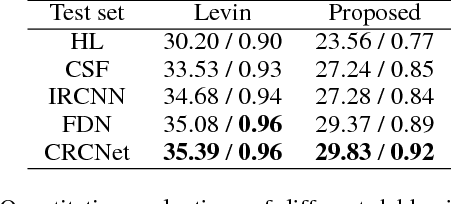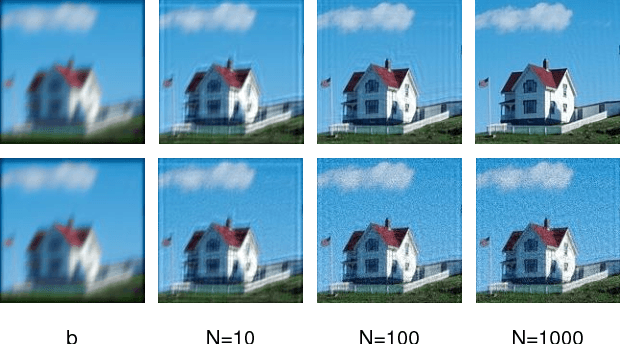Iterative Residual Image Deconvolution
Paper and Code
Nov 04, 2018



Image deblurring, a.k.a. image deconvolution, recovers a clear image from pixel superposition caused by blur degradation. Few deep convolutional neural networks (CNN) succeed in addressing this task. In this paper, we first demonstrate that the minimum-mean-square-error (MMSE) solution to image deblurring can be interestingly unfolded into a series of residual components. Based on this analysis, we propose a novel iterative residual deconvolution (IRD) algorithm. Further, IRD motivates us to take one step forward to design an explicable and effective CNN architecture for image deconvolution. Specifically, a sequence of residual CNN units are deployed, whose intermediate outputs are then concatenated and integrated, resulting in concatenated residual convolutional network (CRCNet). The experimental results demonstrate that proposed CRCNet not only achieves better quantitative metrics but also recovers more visually plausible texture details compared with state-of-the-art methods.
 Add to Chrome
Add to Chrome Add to Firefox
Add to Firefox Add to Edge
Add to Edge